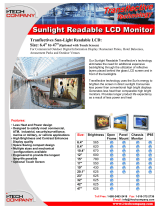
9
RLC-PRC020-EN
Controls
Trane Chiller Plant Automation
Trane’s depth of experience in chillers and
controls makes us a well-qualified choice
for automation of chiller plants using air-
cooled Series R
®
chillers
®
. The chiller plant
control capabilities of the Trane Tracer
Summit
®
building automation system are
unequaled in the industry. Our chiller plant
automation software is fully pre-
engineered and tested. It is a standard
software application, not custom
programming which can prove to be
difficult to support, maintain, and modify.
Energy Efficiency
Trane chiller plant automation intelligently
sequences starting of chillers to optimize
the overall chiller plant energy efficiency.
Individual chillers are designated to
operate as base, peak, or swing based on
capacity and efficiency. Sophisticated
software automatically determines which
chiller to run in response to current
conditions. The software also
automatically rotates individual chiller
operation to equalize runtime and wear
between chillers.
Trane chiller plant automation enables
unique energy-saving strategies. An
example is controlling pumps, and chillers
from the perspective of overall system
energy consumption. The software
intelligently evaluates and selects the
lowest energy consumption alternative.
Regulatory Compliance Documentation
Comprehensive documentation of
refrigerant management practices is now
a fact of life. Trane chiller plant automation
generates the reports mandated in
ASHRAE Guideline 3.
Keeping Operators Informed
A crucial part of efficiently running a
chiller plant is assuring that the
operations staff is instantly aware of
what is happening in the plant. Graphics
showing schematics of chillers, piping,
pumps, and towers clearly depict the
chiller plant system, enabling building
operators to easily monitor overall
conditions. Status screens display both
current conditions and upcoming
automated control actions to add or
subtract chiller capacity. Series R
™
and
other chillers can be monitored and
controlled from a remote location.
Tracer Summit features standard report
templates listing key operating data for
troubleshooting and verifying
performance. Reports for each type of
Trane chiller and three and six-chiller
systems are also standard. Detailed
reports showing chiller runtimes aid in
planning for preventative maintenance.
Swift Emergency Response
We understand the importance of
maintaining chilled water production
while protecting your chillers from costly
damage. If no water flow is detected to a
chiller’s piping, the start sequence is
aborted to protect the chiller. The next
chiller in the sequence is immediately
started to maintain cooling.
In the event of a problem, the operator
receives an alarm notification and
diagnostic message to aid in quick and
accurate troubleshooting. A snapshot
report showing system status just prior to
an emergency shutdown helps operators
determine the cause. If emergency
conditions justify an immediate manual
shutdown, the operator can override the
automatic control.
Integrated Comfort
™
Capabilities
When integrated with a Tracer Summit
building management system
performing building control, Trane chiller
plant automation coordinates with Tracer
Summit applications to optimize the total
building operation. With this system
option, the full breadth of Trane’s HVAC
and controls experience are applied to
offer solutions to many facility issues. If
your project calls for an interface to other
systems, Tracer Summit can share data
via BACnet
™
, the ASHRAE open systems
protocol.
LonTalk Chiller Controls
LonTalk is a communications protocol
developed by the Echelon Corporation.
The LonMark association develops
control profiles using the LonTalk
communication protocol. LonTalk is a unit
level communications protocol, unlike
BACNet used at the system level.
LonTalk Communications Interface for
Chillers (LCI-C) provides a generic
automation system with the LonMark
chiller profile inputs/outputs. In addition to
the standard points, Trane provides other
commonly used network output variables
for greater interoperability with any
automation system. The complete
reference list of Trane LonTalk points is
available on the LonMark website. Trane
controls or another vendor’s system can
use the predefined list of points with ease
to give the operator a complete picture of
how the system is running.
Hardwire Points
Remote devices wired from the control
panel are another reliable method of
providing auxiliary control to a building
automation system. Inputs and outputs
can be communicated via a typical 4-20
mA electrical signal (or an equivalent Vdc
signal of 0-10 or 2-10) or by utilizing
contact closures.
• External Chilled Water Setpoint
• External Current Limit Setpoint
• Condenser-Regulating Valve Control
• Percent of Full Run Load Amps Output
• Condenser Pressure Output
• Refrigerant Monitor Input
• Programmable Relays
Allows the selection of 4 relay outputs
from a list of eight different default
settings: Alarm-Latching, Alarm-Auto
Reset, General Alarm, Warning, Chiller
Limit Mode, Compressor Running, Head
Pressure Relief Request, and Tracer
Control. These contact closures may be
used to trigger jobsite supplied audible or
visual alarms
• Ice Making Control
Provides an interface with ice making
control system and safeties, enabling
both ice making and daytime comfort
cooling
• Chilled Water Temperature Reset
Supplies controls, sensors and safeties to
reset the chilled water temperature
setpoint based upon return water
temperature (standard) or outdoor air
temperature (optional)






















